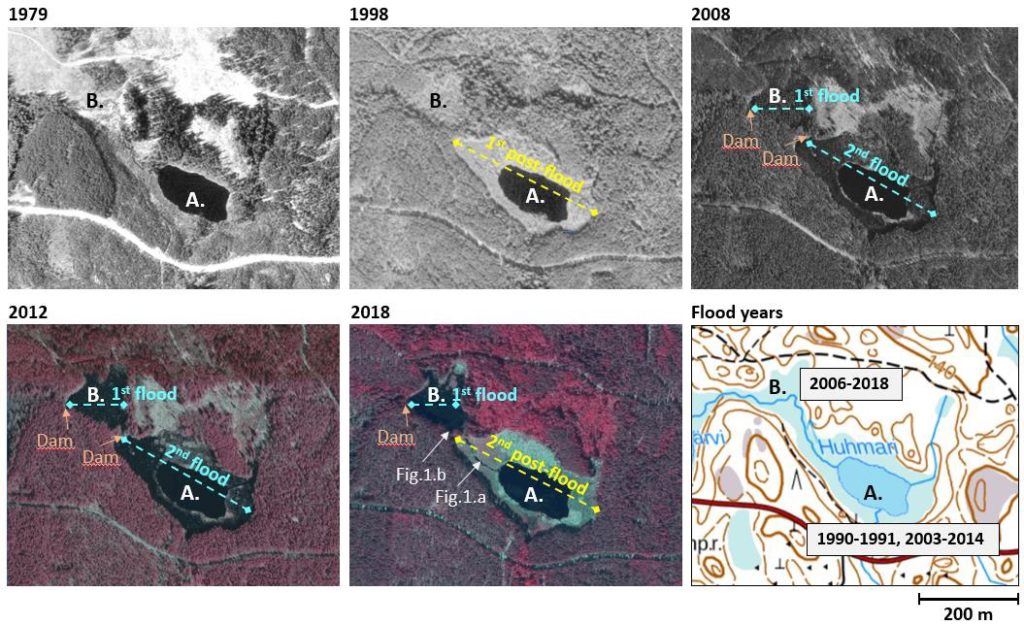Beavers make strange bedfellow. Sometimes the very farmers that once trapped are suddenly glad for all that water they save. Sometimes a nation that is braced for the worst finds themselves saying nice things about their ecosystem services.
Take Finland for instance.
Study: Beavers Transform Forests into Wetlands Over Many Decades
By cutting trees, digging canals, and building dams, beaver colonies shape their forest dwellings in ways that transform flooding patterns, the local food chain, and the structure and size of nearby waterways. But these effects, in the long run, often are beneficial for stormwater management and water quality. The flooding results in huge swaths of new wetland habitat over many years.
Did you catch that? Beaver do all this bad stuff like ruining trees and making floods but gosh darn, Sometimes, if you squint. and study it over a really really REALLY long time, it’s almost like they make things better.
Go figure.
 A new study from University of Eastern Finland (Joensuu) and University of Helsinki (Finland) researchers, published in the journal Environmental Research Letters, explores these long-term shifts over nearly 50 years.
A new study from University of Eastern Finland (Joensuu) and University of Helsinki (Finland) researchers, published in the journal Environmental Research Letters, explores these long-term shifts over nearly 50 years.
“The spread of the beaver in our study area has created a diverse and constantly changing mosaic of beaver ponds and beaver meadows of different ages,” said lead study author Sonja Kivinen, a University of Eastern Finland environmental geographer, in a release. “Beavers can help to restore wetland ecosystems and entire boreal forests, and they also help in conserving the biodiversity of these environments.”
Get the hell out. Are you sitting there with your laser pointer telling me that beavers actually IMPROVE the environment? That’s just crazy. Next you’ll be saving the do some kind of SERVICE for the entire ecosystem. Just how gullible do you think I am?
In 1970, just over a decade after the beavers’ reintroduction to Evo, the region contained only six sites that became prone to flooding as a result of beaver activity. By 2018, that number had jumped to 69 sites, with an average of 13 new flood sites per decade, the researchers estimate. As the beaver population dispersed throughout the forest, many of these sites became interconnected, effectively creating new wetland habitats.

Well sure. If you’re going to bring science into it. I guess EVENTUALLY all those beaver nuisances add up to one big opportunity for fish and wildlife. But honestly is it worth it? Seriously?
“Thanks to beaver activity, there is a unique richness of wetlands in the forest landscape,” said study co-author Petro Nummi, a wetland ecologist at the University of Helsinki. “Flowages dominated by bushes, beaver meadows, and deadwood that can be used by various other species.”
Really?







































